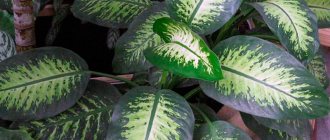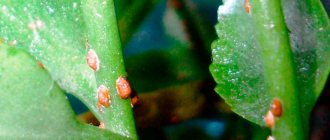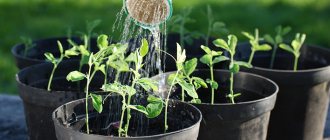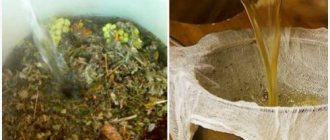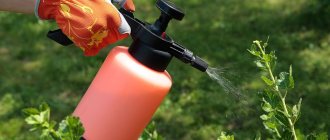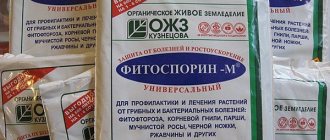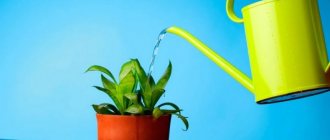Maintaining hygiene for indoor plants is one of the main conditions for their health and attractive appearance. Dust and dirt not only spoil the pleasure of contemplating green pets, but also disrupt metabolic processes and create an ideal environment for the spread of pests. You need to clean plants from dust not from time to time, but regularly. If we are talking about decorative deciduous crops, then this task is not at all easy. After all, even in the matter of plant hygiene, an individual approach to them is needed.
Cleaning the leaves of indoor plants from dust and dirt. © Westend61
Decorative foliage plants are indispensable both for interior decoration and for creating a healthy living environment. Being excellent filters that cope with toxins, harmful substances and allergens, they improve the health of the air and help create a comfortable living environment. But in order for plants to fully perform their function as a living filter, they must be in a clean state. After all, plant leaves attract dust, soot and dirt, which clog the stomata and prevent their normal respiration. Hygiene is important both for the process of photosynthesis - the main life process of plants - and for preventing the spread of pests or diseases. So the issue of maintaining cleanliness is by no means just an aesthetic one. But especially in decorative deciduous crops, maintaining hygiene is far from easy.
Attractive leaves usually mean they have a leaf edge or a special structure or surface texture. Only a few decorative foliage stars have glossy leaves. And living velvet or velor, felt or satin on them automatically means that the leaves of these plants do not like contact. Along with the inability to increase air humidity by spraying, these plants do not tolerate inaccurate watering, drops of water falling on the leaves, not to mention watering. The ban also applies to cleaning such leaves: where on smooth leathery leaves you can get by with a very simple procedure of wiping with a damp sponge, on pubescent plants you will have to use other methods.
First of all, when studying the individual characteristics of a plant, it is worth checking whether it tolerates contact with the surface of leaves, spraying and showering, and whether there are recommended methods for maintaining hygiene. If there is no such information, you should rely on the instructions for spraying: crops for which they are prohibited do not like wiping or washing the leaves.
General rules for cleaning indoor plants:
- Dust removal must be carried out regularly. Dust accumulates on leaves even in rooms where special collection devices are installed. Depending on the intensity with which dust is collected, a mandatory cleaning procedure must be established and carried out regularly. It is best to observe the plant, but the standard frequency of hygiene procedures is once a week or a little less often.
- Rubbing is necessary not only on the outer, “top” side of the leaves, but also on the back side. Despite the fact that dust and dirt are usually visible on one side of the sheet, thorough cleaning must be carried out on both sides.
- In addition to regular procedures, schedule periodic “spring cleaning” into your schedule—showering or washing for plants that can handle it, and a similar thorough cleaning for crops that can’t stand getting wet. They are combined with cleaning the top of the substrate from contaminants and cleaning the trays and outer parts of the containers in which green pets grow. Such procedures are also carried out urgently if it is noticeable that the plant is heavily contaminated, so much dust accumulates that the functioning of the respiratory stomata is disrupted and growth retardation is observed.
- Do not wait until a thick layer of dust and dirt appears on the leaves. As soon as you see that dust becomes noticeable on the leaves, not only from a very close distance, take action immediately. The less the plant is contaminated, the better.
- With any type of wet cleaning on plants, they need to be protected not only from direct sunlight, but also from cold environments, air currents, and drafts. Drying of the leaves is carried out in a warm place with diffused semi-shaded lighting.
Spraying the leaves of indoor plants. © bluecinema
Spathiphyllum
This beautifully flowering plant with large decorative leaves prefers diffused sunlight and high air humidity. Spathiphyllum is quite shade-tolerant and drought-resistant; under favorable conditions, it blooms throughout the year. The plant should be protected from drafts and temperature drops to 12°C or less. Spathiphyllum is also called “women’s happiness.” It is believed that having positive energy, this flower promotes harmony and mutual understanding between family members.
The Best Air Purifying Houseplants
Spathiphyllum wallisii
For maximum efficiency of the plant, dust must be periodically removed from its foliage. Flowers are also a wonderful addition to the wonderful qualities of this plant.
For every 10 m2 of space you must have at least 1 indoor plant in a pot with a diameter of 15 cm or more. Instead of placing single plants around a room, grouping plants is both beautiful and better for air quality.
Care: Spathiphyllum loves shade, does not tolerate bright light, and requires high air humidity. The soil should be slightly moist and can be fed with liquid all-purpose fertilizer in spring and summer.
Eliminates: formaldehyde, benzene, trichlorethylene, xylene, ammonia, and much more.
Dracaena
These are plants of different shapes and sizes. Dracaena fragrant "Massangeana" reaches a height of 1.5 m and has a beautiful yellow stripe on the leaves. Dracaena marginata is one of the most common varieties of dracaena, can reach 3 m in height, it resembles a miniature palm tree.
Care: different types of dracaenas have different attitudes to light. Before purchasing, find out the plant's preferences. The soil should be moist, but not soggy. Water in a tray is fatal to dracaena. In summer and spring you can fertilize with universal liquid fertilizer.
Eliminates: formaldehyde, xylene, toluene, benzene, trichlorethylene.
Bamboo palm or Chamaedorea seifrizii
Light and elegant are the definitions that best suit this palm. It can be 1-2 m in height and releases moisture into the air, which makes it especially useful during the heating season, when the air in the room is especially dry.
Care: Although this palm loves bright light, it should not be placed in direct sunlight. The soil should be moist. During the summer, it is best to feed monthly with liquid all-purpose fertilizer.
Removes: formaldehyde, benzene, carbon monoxide, xylene, chloroform, and other pollutants.
Epipremnum aureum
An unpretentious vine that reaches a length in a room of 1.8-2.4 m (no longer recommended). Epipremnum aureus is one of the most effective indoor plants that purify the air.
Care: Epipremnum aureus grows in any light, but does not like direct sunlight. It is necessary to water when the soil becomes dry to the touch. It's best to fertilize monthly with an all-purpose liquid fertilizer and remove the tendrils when the plant gets too long.
Removes: formaldehyde, xylene, toluene, benzene, carbon monoxide, and other pollutants.
Chlorophytum comosum
This is the most unpretentious indoor plant - you have to try very hard to make it die. It has green or white-green narrow leaves and hanging airy tendrils with small shoots.
Care: grows in light and shade. You can water it rarely, then it takes moisture from the roots. If you water well, it will grow.
Removes: benzene, formaldehyde, carbon monoxide, xylene and other pollutants.
If you find an error, please select a piece of text and press Ctrl+Enter.
How to wash the leaves of indoor flowers from dust to make them shine?
The procedure is mandatory: we wash away dust and stains from watering or spraying from the leaves of indoor plants.
By removing contaminants, including mineral salts, we will ensure normal air exchange for the flower. As people say, “let’s breathe.” The benefits are colossal: the health of plants improves, they grow and develop faster. Water will wash away pathogenic microorganisms and pest larvae if they have not yet caused significant damage.
In the end, they just look neat and become a decoration for the interior of the house. A flower with clean leaves is more spectacular than a flower that you forgot to wash. I tell you about the procedure and little secrets in detail.
Rules for cleaning plants
Contamination is best seen on large sheets of rich green color. But this does not mean that the rest do not need to be washed!
The frequency of the procedure depends on the location of the flower and your place of residence. A plant placed on a windowsill near a window that is often opened will become dirty faster than one placed in the back of the room. The type of settlement also plays a role: in the city, green pets need to be washed more often.
Watch the plant! Traces of dust and water stains have appeared - why wait for a better opportunity? We have a free minute - let's take care of the rastuski! Moreover, it won’t take much time.
How to clean plants with “fluffy” leaves?
Can violets be washed?
A special word needs to be said about indoor plants whose leaves are covered with villi. These are geraniums, all gesneriaceae (gloxinias, violets, achimenes) and some others. Such flowers cannot be washed regularly - the leaves dry out very poorly (drops are retained by the pubescence), which can cause problems. For example, sunburn or rotting.
At the same time, dust also settles on them, which must be dealt with. From my own experience I will say: maintaining a violet in a decorative form is quite a task! You can remove dust with a soft brush, tilting the plant and brushing away dirt from the center.
But once every 2-3 months you can have a “shower”. But be sure to ensure that the flower dries in a warm and shaded place. Without cold drafts, of course.
Cleaning flowers with large leaves
Detergents cannot be used
It is easiest to wash plants with large leaves: rubber ficus, monstera, dieffenbachia and others. All you need is a soft, damp cloth or sponge.
There are no special requirements for water: the main thing is that it is at room temperature. I recommend using filtered water to avoid getting new stains due to mineral salts and other impurities that tap water is rich in.
But what about those whose leaves are very small?
Be sure to let the water drain afterwards
A great option is to arrange a floral shower. Hold the plants under thin, diffuse streams, preferably covering the soil with film. We are talking about a hot shower that stimulates growth. For cleaning, you can use water at room temperature. A great option is to combine business with pleasure.
“Secret Ingredient” – Natural Polish
Spathiphyllum leaves are very beautiful! Even without flowers
And now - a little advice from personal practice that allows you to make flowers even more beautiful. I actively use it on spathiphyllum and dieffenbachia. After washing, rub the leaves with milk or beer for a gorgeous shine!
Follow the most important and interesting things in the Tatmedia Telegram channel
Spiny pets
Cacti and other indoor plants with thorns or thorns, including heavily pubescent decorative deciduous begonias, are cleaned of accumulated dust not by ordinary wiping, but with the help of brushes and brushes.
For cacti, you can use stiffer brushes (for example, toothbrushes) during the cleaning process, but it is always better to use a brush with elastic, thick bristles, which allows you to work without the slightest injury even for very fine bristles on both hardy and much more delicate plants.
Other tips
Since we are talking about how to properly care for indoor plants, other aspects should be mentioned. It is very important, for example, to remove “diseased” parts (tear off leaves, cut off stems).
If your plant has wilted flowers or yellowed leaves, it is better to remove them in a timely manner. Then the plant will be able to direct all its forces to the preservation and development of healthy shoots.
In addition, the characteristics of each plant should be taken into account. After all, they require different care. There are some that “don’t like” being wet: for example, cacti and succulents. They need dry cleaning.
Cleaning the leaves of houseplants is actually not that difficult. It takes only a few minutes. But the plants will feel good and pleasant. And if you have flowers at home, let them be a real interior decoration! Healthy and juicy greens will please the eye and will definitely lift your spirits!
Dust must be removed regularly
The frequency of anti-dust treatment depends on the cleanliness of the air in your home. If it is located next to a busy boulevard, or there is a construction site nearby, then you should wipe off the leaves much more often. The best way to tell if it's time to care for your flowers is to rub the leaves with your fingers. If there is still dust on them, then it’s time to act.
Edge and living velvet on the leaves
Plants with beautiful leaf textures are afraid of even the slightest drops of water. And wiping, let alone washing, is unacceptable for them. The purity of the greenery of such decorative deciduous and flowering crops is maintained by completely different means.
The main method of removing dirt from pubescent leaves is careful manual cleaning using a piece of soft velvet, a soft brush or special brushes with delicate natural bristles.
In emergency situations, for example, when plants have suffered from irregular care in the kitchen, their leaves are covered with a greasy coating, they were indoors during repairs, even on pubescent leaves it is necessary to wash them. True, we are not talking about showering: with the help of soap suds and gentle washing, dirt is removed, and then the plants are allowed to dry thoroughly, protecting them from bright light and low temperatures. Such washing is always a very serious stress and rarely ends with the return of the decorative properties of old leaves to their original ones. Before washing pubescent leaves, you should always carry out the usual dry cleaning of dust and dirt, and only then carefully wash them.
Cleaning the leaves of indoor plants from dust and dirt and adding shine
Use a cloth or full shower
About dry and wet cleaning
There are plants that do not tolerate wet cleaning well:
- violets and other flowers with velvety leaves that retain water;
- succulents with thick leaves. They accumulate moisture, and as soon as there is an excess of it, the leaves immediately fall off.
For dry and wet cleaning, use a cloth or foam sponge. Fleecy leaves are cleaned with a soft toothbrush, shaving brush or paint brush. During the procedure, movements go from the stem to the edge of the leaf.
When wet cleaning, the leaves can be wiped with a cotton pad soaked in milk or beer. The result is wonderful: the dust does not curl up, and the greenery becomes bright and shiny.
In order for the shower to bring more benefits to green “pets”, you need to follow the following tips:
- The flowers should be watered the day before so that excess moisture does not linger in the pot.
- The soil must be tightly covered with film.
- Adjust the jet (pressure, temperature).
- Tilt the flower pot and place the crown under the stream for half a minute.
- Let the water drain.
- Flowers should dry in a room where it is warm and free of drafts.
Hot shower
A hot shower has a temperature of 40-60 degrees. Recommended for flowers with lush foliage. We spill hot water on the leaves, trunks and soil in the pots. The result is visible after two hours. After this, the flowers are transformed, becoming vigorous and bright.
The benefits of such a shower are obvious:
- cleanses of impurities;
- causes the growth of new shoots;
- leaves receive moisture;
- hot water - prevention against pests and pathogenic microflora of plants;
- the root system is strengthened.
Another way
A way to wash a flower that has many small leaves:
- fill the bucket with warm water;
- add a few drops of dishwashing detergent;
- holding the ground, turn the pot over;
- put the leaves in a bucket;
- rinse;
- dry.
It is good to bathe the plant in melt or rain water, if possible.
Do I need to use soap?
You need to use soap when the leaves are very dirty. For example, after repairs, if the flowers were not covered. Soap is used in the fight against fungal diseases, such as gray rot. Mealybugs, spider mites, and aphids infect domestic flowers.
If pests are detected, the plants are treated with a soap solution. It is necessary to moisten a napkin in soapy water and wipe the leaves. If the plant is small, you can dip the foliage in a container with soapy water. This is how not only affected plants are treated, but also all others for prevention.
Preparations against plant pests
The topic of the safety of using special products to control pests of indoor plants is always relevant. At the moment, all chemicals are dangerous to one degree or another for humans, birds, fish and animals.
First of all, experts recommend trying biological and folk remedies, but a situation often arises when only a drug can help get rid of pests. It is important to use medications wisely.
- First, choose products with a lower hazard class - III or IV, and in extreme cases - II.
- When treating indoor plants with chemicals, follow the instructions exactly, observe the dosage and precautions.
Popular and affordable drugs
Each pest control product indicates the active ingredient, approximate price and hazard class (toxicity).
4 – low danger to humans, safe for bees and beneficial insects, 3 – moderately dangerous substance, 2 – highly dangerous substance, 1 – extremely dangerous for humans and animals.
Non-systemic insecticides of contact-intestinal action
- “Akarin” (old name “Agravertin”) – 4, (avertin), price: 4 ml package – 13-20 rubles.
- "Actellik" - 2, (pirimiphos-methyl), price: 2 ml package - 30-50 rubles. In Russia, the drug for personal use is not registered as of October 1, 2016. Although sometimes the drug can still be found in small stores and on the Internet.
- “Bankol” - 3 (bensultap), price: 10 gram package - 30-40 rubles.
- “Vertimek” - 2, (abamectin), price: 90 dollars/liter, manual packaging - 2 ml - 25 rubles.
- “Inta-Vir” - 3, (cypermethrin), price: 8 g package - 10-15 rubles.
- “Karbofos” (“Malathion”, “Fufanon”, “Iskra M”) - 3, (malathion), price: 30 g package - 30-40 rubles (strong unpleasant odor).
- “Fitoverm” - 4, (aversectin C), price: package (ampoule) 4 ml - 15-20 rubles.
Systemic insecticides of contact-intestinal action
- "Aktara" - 3, (thiamethoxam), price: 1.2 ml ampoule - 40-50 rubles, 4 g package - 90-120 rubles.
- “Confidor Extra” - 3, (imidacloprid), price: 1 g package - 30-40 rubles.
- “Tanrek” - 3, (imidacloprid), price: 1 ml ampoule - 10-15 rubles.
- Prices are based on hypermarkets such as “Obi”, “Leroy Merlin” according to the exchange rate of 1 dollar = 65 rubles. These drugs are widely found in many flower shops.
Specific acaricides
- Benzylates – “Neoron” – 3, (bromopropylate).
- Derivatives of sulfonic acids - "Nisoran" - 4, (hexythiazox) and the group of tetronic acids - "Oberon" - 3, (spiromesifen).
- Propargit - “Omite 30 and 57” - 2, (propargit).
- Pyridazipones – “Sunmite” – 3, (pyridabene), 1 treatment per year, no odor.
- Ketoenols – “Envidor” - 3, (spiridiclofen).
- Quinozolines – “Demitan KS” - 2, (phenazahine).
- Pyrazoles – “Ortus” – 3, (fenpyroximate).
- Tetrazines – “Apollo” – 4, (clofentesine), “Flumite” – 4, (fluvenzine)
Insectoacaricides
- Based on organophosphorus substances - "Actellik" - 2, (pirimifos-methyl), "Dursban" - 3, (chlorpyrifos) and "Karbofos" ("Malathion", "Fufanon") - 3, (malathion).
- Based on derivatives of the synthesis of the fungus Streptomyces avermitilis: “Akarin” (old name “Agravertin”) and “Kleschevit” - 4, Avertin (the tick practically does not get used to it), “Aktofit” - 4, (aversectin C), “Vertimek” - 2, (abamectin), "Fitoverm" - 4, (aversectin C).
IMPORTANT! Specific acaricides and insectoacaricides are used to control spider mites, and insecticides are used to control insects.
Which drug is better?
The Flower Festival magazine recommends starting the fight with Fitoverma as it is as safe as possible for humans and animals, or Aktara, Inta-Vira or Tanrek/Konfidor (the same active ingredient).
These agents can be alternated if necessary.
In case of serious damage or weak exposure, move on to Actellik, Karbofos or Vertimek, as they are more toxic.
Karbofos, Vertimek and Actellik can only be used to treat indoor plants outdoors.
General plan of drug treatments
- Treat indoor flowers with insecticides 3-4 times every 7-8 days at an average daily temperature of 22-24°, and when the temperature is higher (25-28°), then after 5-6 days. At an average temperature of 15-20° - 10-12 days, and if below 15° - 8-10 days.
- Be aware that if the air temperature at the time of spraying is below 18°, the effectiveness of chemicals is seriously reduced.
- After spraying, there is no need to put a plastic transparent bag on your home flower; it is more important to repeat the procedure at the right time.
- Remember that a single treatment with any drug gives an immediate effect.
How to properly treat plants with drugs?
- Be sure to take personal protective measures (skin, respiratory organs).
- After the procedure, wash your hands and face with soap, and rinse your throat and nose with water.
- Treat plants only when they are dry.
- The best time for the procedure is before 12.00. On a cloudy day, until 14.00. During and after treatment, until the plant dries, it should not be exposed to direct sunlight.
- The optimal temperature is 20-26 degrees Celsius.
- The place to treat a flower with drugs of the 3rd and 4th hazard classes can be a balcony or a bathroom, and with drugs of the 2nd class only the open air. Avoid contact of drugs with foreign objects.
- For greater effect from spraying with any drug, it is recommended to add soap to the solution.
- Be sure to ventilate the room well after using medications.
IMPORTANT! Carefully read the instructions for the drug - consumption rates may differ as they are often produced in liquid and dry form, in different concentrations of active ingredients or package sizes.
